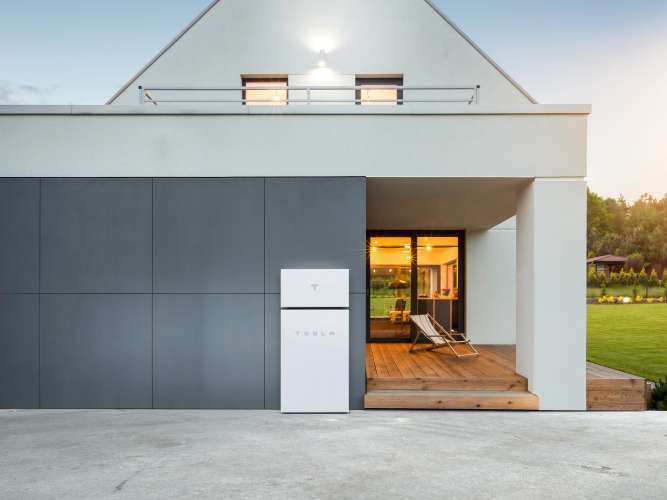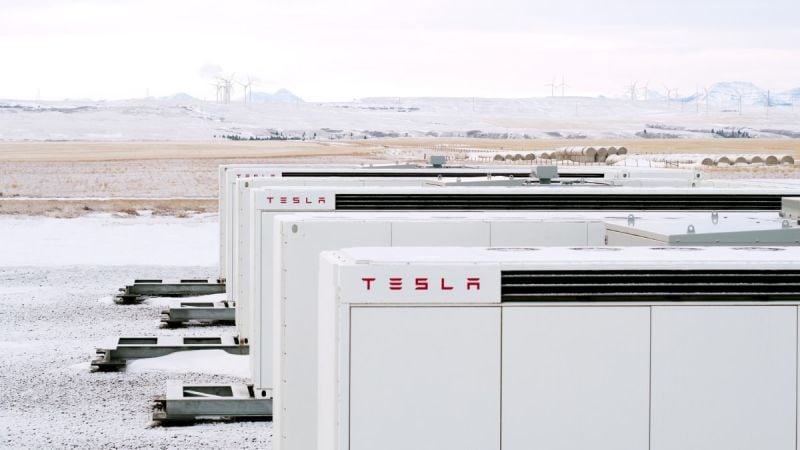Anyone familiar with Tesla, to a lesser or greater extent, will know that the company that Elon Musk runs is more than just a regular manufacturer of electric cars. Under the Tesla umbrella there are several business branches, including 'Energy Storage', that is, the installation of stationary batteries: a business that is growing even faster than the electric car business itself.
Tesla's Megapack, large scale battery storage system, is the most outstanding example: this is the system designed to be used in the Powerpacks, Tesla's parking lots that can connect several of these batteries, allowing a storage capacity of several megawatts in a very small area.

The increase in growth is impressive, especially when you consider that Tesla's car sales increased, but at a slower rate. The reason for this sudden and outstanding increase in Megapack batteries is that in the fourth quarter of 2022 Tesla awarded contracts for 88 MWh of Megapack battery storage projects around the world. The numbers speak for themselves: Tesla's business with the batteries is growing significantly.
How do we know that? Apparently the figures of the past year show that the Megapack business in particular, far from slowing down, is in fact growing even faster than the car business. The aforementioned 152% growth represents a leap that, according to analysts, is due to the fact that energy storage projects are much easier to implement than electric car projects, and require a much shorter time to market.
Tesla basically sold more than 1.3 million cars worldwide in 2022, a 40% more than the previous year. Both car sales and the revenue they generate are growing at a much higher rate than any other manufacturer in the automotive industry, as figures very clearly show. Though cars remain Tesla's biggest source of revenue and profit by far, its energy storage business clearly grows at a much faster pace.

With the publication of its financial results for the last quarter of 2022, the Austin, Texas company announced the figures of its different businesses. The company calls 'Energy Storage' the installation of stationary batteries that serve as backup to homes, businesses and power plants. In this field Tesla had a record year: in 2022 it deployed 6.54 GWh of stationary batteries, an outstanding 64% more than in 2021.
The last quarter of 2022 was in fact especially good: between Powerwall and Megapack units, Tesla ended up installing a total of 2.4 GWh; as we said before, an outstanding 152% more than the same quarter of the previous year, and 362 MW more than the immediately preceding quarter.
In the results report Tesla explains that it is "the highest level of installations" they have achieved so far. The company adds that the demand for stationary batteries "continues to exceed", largely, its production and supply capacity. To keep up with the growing demand, Tesla is increasing the capacity of the Megapack factory in Lathrop (California, USA) to 40 GWh per year. The expansion of the factory was already noticeable, contributing to the record of last quarter; although its impact, according to experts, should be even greater throughout this year, 2023.
A fully assembled Tesla Megapack:$TSLA @Tesla @torquenewsauto pic.twitter.com/oKRgQwfT3U
— Jeremy Noel Johnson (@AGuyOnlineHere) January 25, 2023
Still, Tesla's power division (which includes stationary batteries and photovoltaic solar panels) is still a small component of the whole business. In 2022, Tesla had total revenue of 81,4 billion dollars, indeed a record figure in its 20-year history, with a net profit of 13,6 billion dollars. The energy division accounted for 4.8% of revenue, reaching 3,9 billion dollars in 2022: a proportionally small amount as compared to the company's total, but a very important component to take into account, especially considering its amazing growth rate.
A must watch for all Tesla investors! $tsla
Tesla Energy is an awakening giant and will surprise everyone with its revenue and profit contribution to the bottom linehttps://t.co/RbgiXVqUh9— Alex (@alex_avoigt) January 22, 2023
With this, Tesla is consolidating itself as a key player in the development of energy storage systems, an industry that experts believe will grow quickly in the next few years, with projections that foresee an exponential increase in the installed capacity. It seems that, finally, Tesla has found another profitable and growing avenue of income, and one that involves new prospects: after all, battery storage is the way of the future.
All images courtesy of Tesla Inc.
Nico Caballero is the VP of Finance of Cogency Power, specializing in solar energy. He also holds a Diploma in Electric Cars from Delft University of Technology in the Netherlands, and enjoys doing research about Tesla and EV batteries. He can be reached at @NicoTorqueNews on Twitter. Nico covers Tesla and electric vehicle latest happenings at Torque News.












